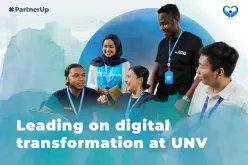In the dynamic landscape of digital transformation, collaborative efforts pave the way for success. Any substantial digital change within an organization is a collective effort involving multiple departments. Two obstacles often stand in the path of achieving true impact: silo culture and resistance to change. The best way to overcome these two at once is to base your digital strategy, roadmap and implementation plan on shared outcomes.
Usually, digital transformation often involves multiple projects, each handled by different project teams with distinct responsibilities. These comprise specialized individuals from different sections who contribute to the change. While this approach seems logical, it can inadvertently reinforce silos and hinder progress.
Instead, building multidisciplinary and cross-functional teams that blend technology and business acumen and share accountability is critical. This shift away from grouping people by business function fosters collective ownership of shared outcomes.
Suppose the focus is solely on delivering tasks or outputs. In this case, chances are high that if the project under-delivers or fails a blame game starts. Individuals may consider their delivery successful because they have completed their tasks and blame others for not delivering their expected part. The big picture is lost.
By defining success as an outcome – for example, an increase of 20 per cent in the number of UN Volunteers – we foster a sense of unity and purpose. We empower team members to transcend their individual specialized roles or break away from department silos. In this way, they can collaborate better and focus on how they can help achieve the shared outcome.
In essence, success should be measured not by the completion of tasks, but by the realization of outcomes. Emphasizing the significance of outcomes – tangible results that propel the organization forward – motivates team members to invest their combined skills, energy and passion towards the collective achievement of these goals.
Let's face it – outcomes are far more meaningful and comprehensible to both internal and external stakeholders. This clarity enhances communication, accelerates decision-making and garners support from all involved parties. Our digital transformation journey begins with articulating these outcomes, clearly defining our objectives and aligning every effort towards their fulfillment.
Start small, showcase the value of shared outcomes, continuously refine and improve, then repeat.
In the words of physicist Stephen Hawking, "The greatest enemy of knowledge is not ignorance; it is the illusion of knowledge."
Let us shatter the illusion and embrace a culture of perpetual learning, where knowledge thrives and transformation knows no bounds.

